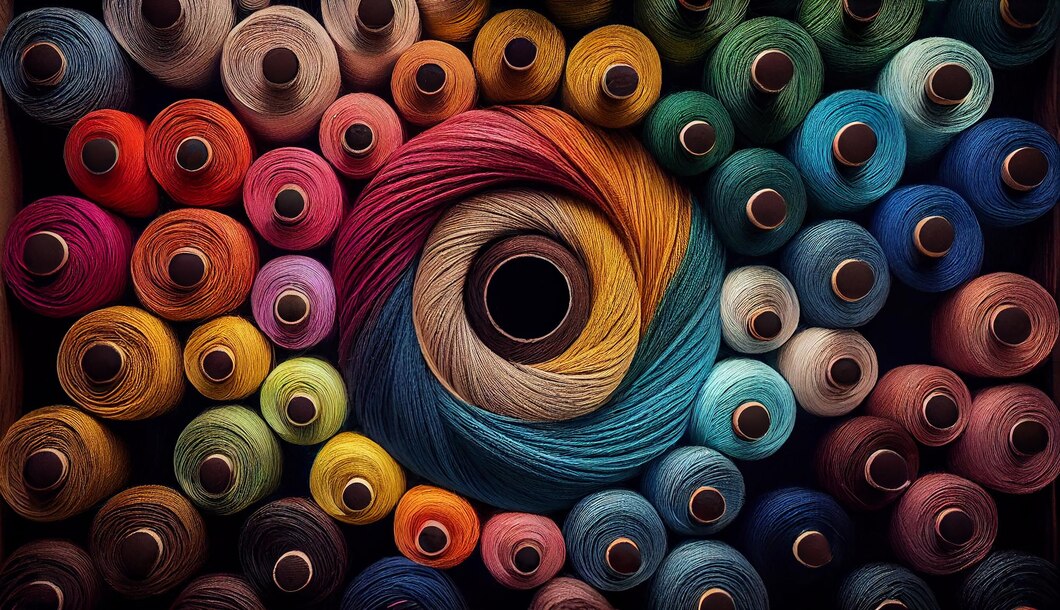Post Preview
Key Takeaways:
- Eco-friendly textiles are becoming increasingly important in sustainable fashion.
- Innovative materials and processes are reducing the environmental effects of textile manufacturing.
- Understanding the benefits of sustainable fabrics can influence consumer choices and industry practices.
Introduction to Sustainable Textiles
Sustainable textiles are revolutionizing the fashion industry by offering eco-friendly alternatives to traditional fabrics. The fashion industry’s significant carbon footprint and increased environmental consciousness have led to a surge in demand for fabrics made with sustainable processes. This demand encourages manufacturers to innovate and develop materials that minimize environmental impact while maintaining high quality. One example is sustainable fabric, which incorporates recycled and eco-friendly components to reduce its ecological footprint. Adopting these fabrics signifies a shift towards more responsible production methods in the textile industry.
Innovative Eco-Friendly Materials
One of the most exciting developments in sustainable textiles is the creation of new, eco-friendly materials. These include biodegradable fabrics, recycled fibers, and textiles made from organic sources. For instance, materials like organic cotton and bamboo fabric are gaining popularity for their minimal environmental footprint. These materials often require fewer resources and generate less waste, making them vital to a sustainable fashion industry. These eco-friendly innovations offer unique textures and qualities that appeal to designers and consumers.
Biodegradable Fabrics
Biodegradable fabrics such as Tencel and hemp are becoming increasingly popular. These fabrics decompose naturally, reducing the accumulation of waste in landfills. Tencel, for example, is compostable and biodegradable and is created from responsibly sourced wood pulp. Conversely, hemp is a highly durable and versatile material with a low environmental impact. The cultivation of hemp requires minimal water and no pesticides, making it an ideal candidate for sustainable textile production.
Recycled Fibers
Recycled fibers are another innovative solution. Textiles made from recycled polyester utilize plastic bottles and other post-consumer waste, diverting these materials from landfills and oceans. Recycling fibers manages waste but also decreases the need for virgin resources. Resource-wise, recycling fibers consumes less energy and water than producing new materials, further enhancing their environmental benefits.
Environmental Benefits of Sustainable Fabrics
Eco-friendly fabrics offer numerous environmental benefits. Compared to conventional textiles, they often require less water and fewer chemicals to produce. Additionally, sustainable fabrics are often more durable, reducing waste over time. These materials can significantly lower carbon emissions and pollutants, creating a healthier planet.
Water Conservation
Conventional textile production is water-intensive. Sustainable fabrics, however, often incorporate methods that use significantly less water. For instance, organic cotton farming typically uses rainwater more efficiently, reducing the burden on local water supplies. This approach conserves water and helps maintain the ecological balance of surrounding areas.
Chemical Reduction
Another significant benefit is the reduction of chemical chem calls. Organic textiles should avoid using synthetic pesticides and fertilizers, which can contaminate soil and waterways. This results in a cleaner and less toxic process process. Furthermore, using natural dyes and finishes in sustainable textiles minimizes the release of hazardous substances into the environment, promoting a safer ecosystem.
Real-World Examples
Various companies and designers are incorporating sustainable textiles into their products. For example, numerous global brands now feature lines of clothing made from recycled materials. Additionally, innovative companies are exploring plastic waste from oceans to create fashionable and functional textiles, showcasing the potential of sustainable materials in addressing environmental challenges.
Influence of Consumer Choices
Customers are a significant factor in the need for environmentally friendly fabrics. By opting for eco-friendly clothing options, consumers can support the growth of sustainable practices within the textile industry. Educating consumers about the benefits of sustainable fabrics and encouraging thoughtful purchasing decisions can lead to significant positive impacts on the environment.
Making Informed Decisions
Choosing items that are certified by reputable sustainability standards or have an eco-friendly label allows consumers to make a difference. Brands that provide transparent sourcing and manufacturing processes enable consumers to make informed decisions. Supporting companies dedicated to sustainability can motivate more brands to adopt eco-friendly practices. Additionally, consumers can extend the lifecycle of their clothing items by practicing mindful consumption, such as repurposing, recycling, or donating garments.
Future Trends in Textile Sustainability
The future of textile sustainability looks promising, with continuous advancements in technology and materials. Innovations like lab-grown fabrics and using renewable energy in manufacturing are on the horizon. The need for and awareness of sustainable solutions is growing, and the textile sector is well-positioned to play a significant role in the international drive to stop environmental deterioration.
Lab-Grown Fabrics
Lab-grown fabrics, such as those produced through fabrication, represent a cutting-edge approach to sustainable textiles. These fabrics are created using microorganisms, reducing the reliance on traditional agriculture and minimizing environmental impact. By harnessing the power of biotechnology, r searchers and manufacturers are developing new materials that offer unique properties and performance characteristics, paving the way for innovative applications in fashion and beyond.
Renewable Energy in Manufacturing
An effective strategy to reduce the textile industry’s carbon impact is to transition to renewable energy sources. Solar, wind, and hydroelectric power are being increasingly integrated into textile factories, leading to the establishment of a more sustainable production cycle. This shift towards clean energy not only benefits the environment by reducing carbon emissions but also contributes to lowering manufacturers’ operating costs. As a result, sustainable practices are becoming economically viable in the long term.
To summarize, the textile business is currently shifting towards sustainability. By adopting cutting-edge materials and methods, the industry seeks to reduce its environmental impact and pave the way for a more sustainable fashion industry. To reduce the carbon impact of the textile industry, an effective strategy is to transition to using renewable energy sources. Solar, wind, and hydroelectric power are being increasingly integrated into textile factories, leading to the establishment of a more sustainable production cycle. This shift towards clean energy not only benefits the environment by reducing carbon emissions but also contributes to lowering manufacturers’ operating costs. As a result, sustainable practices are becoming economically viable in the long term.





Be First to Comment